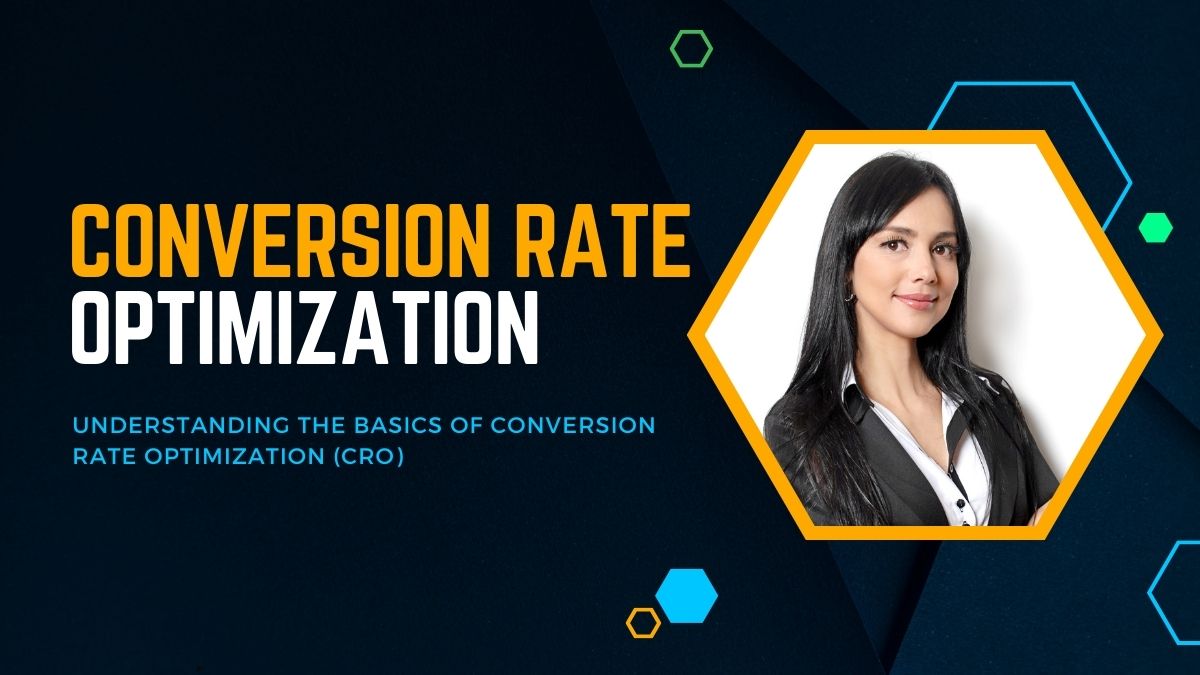
Conversion Rate Optimization (CRO) is a crucial aspect of any successful digital marketing strategy. It focuses on improving the percentage of website visitors who take the desired action, such as making a purchase, filling out a form, or subscribing to a newsletter. In this blog post, we will explore the basics of Conversion Rate Optimization and how it can help businesses increase their conversions and achieve their goals.
1. Defining Conversion Rate Optimization (CRO):
Conversion Rate Optimization (CRO) is an essential component of digital marketing that involves a systematic process of enhancing the performance of your website or landing page. CRO aims to increase the percentage of visitors who take a desired action on your site, such as making a purchase, filling out a form, or clicking on an ad. By optimizing your conversion rate, you can maximize the return on investment (ROI) from your website and boost revenue.
The basic principle behind CRO is simple: make it as easy as possible for users to accomplish their goals when they visit your site. This requires careful analysis and testing of various elements on your page, including design, content, layout, navigation, and calls to action. By identifying areas where users are dropping off or encountering obstacles in their journey toward conversion, you can make targeted improvements to optimize their experience and increase conversions.
2. Setting Clear Conversion Goals:
If you’re looking to improve your website’s conversion rate, it’s essential to set clear and measurable goals before diving into Conversion Rate Optimization (CRO). Without a well-defined objective, it can be challenging to determine what changes need to be made on your site. Setting goals also ensures that your efforts are aligned with the overall business strategy.
When setting conversion goals, it’s important to establish specific actions that you want visitors to take on your website. These actions could include filling out a contact form, making a purchase, or subscribing to a newsletter. By determining these objectives upfront, you can tailor your CRO strategy accordingly and focus on optimizing the areas of your site that will have the most significant impact on achieving those goals.
Measuring progress toward your conversion goals is also crucial in evaluating the effectiveness of your CRO efforts.
3. Conducting Conversion Funnel Analysis:
A conversion funnel is a critical tool for businesses looking to improve their website’s performance. A conversion funnel analysis involves breaking down the steps visitors take when they land on your website and how many of them convert into customers. By analyzing this data, you can identify areas that need improvement and optimize your website for better conversions.
To begin a conversion funnel analysis, the first step is to identify the different stages in your visitor’s journey. Typically, this includes awareness, interest, consideration, and decision-making stages. Once you have identified these stages, you need to track visitors’ behavior at each stage using tools like Google Analytics. This will help determine where visitors drop off and what actions they take before leaving your website.
Another essential aspect of conducting a conversion funnel analysis is setting up goals and tracking metrics accurately.
4. Understanding User Behavior:
Understanding user behavior plays a crucial role in optimizing your website for conversions. While having a visually appealing website is important, it’s equally essential to know how users interact with your site. To make informed decisions about improving user experience and increasing conversion rates, businesses need to analyze their website traffic and data.
One effective way to understand user behavior is by using heatmaps. By tracking where users click, how far they scroll down the page, and what areas of the page receive more attention, heatmaps provide valuable insights into how visitors interact with your site. This information can be used to optimize your website’s layout, content placement, and call-to-action buttons.
To achieve success in conversion rate optimization (CRO), businesses should prioritize understanding their audience’s behavior on their website through tools like heatmaps.
5. Conducting A/B Testing:
One way companies can do this is by conducting A/B testing. A/B testing is a method used to improve the conversion rates of websites and other digital platforms. It involves creating multiple versions of a web page and then testing them against each other.
The goal of A/B testing is to determine which version of a web page leads to higher conversion rates. Conversion rate optimization (CRO) is an essential part of any business strategy, as it helps companies convert more visitors into paying customers. By conducting A/B tests, businesses can evaluate different design elements such as color schemes, font styles, and layout variations to identify which option drives more conversions.
6. Optimizing Website Design and User Experience:
It is crucial to ensure that your website design and user experience are optimized for maximum impact. Website design and user experience play a vital role in conversion optimization, which is essentially the process of turning visitors into customers.
The basic principles of conversion rate optimization include understanding your target audience, creating clear calls-to-action, optimizing page load speed, making sure your website is mobile-friendly, and utilizing white space effectively. These principles will help you create an engaging website that encourages visitors to take action.
When designing your website, it’s important to put yourself in the shoes of your target audience. Consider what they are looking for when they visit your site and make sure that all content is easily accessible and organized.
7. Crafting Compelling and Persuasive Copy:
Crafting compelling and persuasive copy is essential for any business looking to increase its conversion rate. The power of well-crafted copy can engage visitors and persuade them to take action, whether it’s buying a product, signing up for a service, or subscribing to a newsletter. The key is to use persuasive language that speaks directly to the needs and desires of your audience.
To start crafting compelling copy, you must first understand the basics of conversion rate optimization (CRO). CRO is the process of improving your website’s conversion rate by analyzing user behavior and making changes that increase engagement and sales. This involves understanding your target audience, identifying their pain points, and tailoring your message to address those needs directly.
Once you understand the basics of CRO, you can begin crafting persuasive copy that speaks directly to your audience. This means using powerful language that emphasizes the benefits of your product or service over competitors.
8. Implementing Trust Signals:
When it comes to digital marketing, gaining and maintaining a visitor’s trust is key. Trust signals are the elements that help establish trust with visitors by showcasing your credibility and reliability. These signals can be anything from customer reviews and testimonials to security badges and social media presence. By implementing these trust signals into your website design, you’ll increase the chances of visitors converting into customers.
One of the primary benefits of using trust signals is an increase in conversion rates. Visitors who feel confident in your brand are more likely to make a purchase or submit their information for future communication. Additionally, trust signals can help reduce cart abandonment rates by providing peace of mind during the checkout process. Incorporating social proof through customer reviews or endorsements from industry influencers can also enhance your brand’s reputation and authority in the eyes of potential customers.
9. Analyzing and Iterating:
When it comes to Conversion Rate Optimization (CRO), it’s crucial to understand that it is not a one-time process. Instead, CRO requires continuous analysis and optimization. It’s all about identifying areas of your website that need improvement and iteratively testing different solutions until you find the optimal strategy.
To start with, make sure you have a solid understanding of the basics of Conversion Rate Optimization. This includes defining what “conversion” means for your business, setting up conversion tracking on your website, and identifying key metrics such as bounce rate, time on page, and click-through rates. Once you have a clear picture of where you stand currently in terms of conversion performance, you can begin to identify areas for improvement.
Regularly monitoring your conversion metrics is essential when analyzing and iterating CRO efforts. You want to track changes over time so that you can identify trends or patterns in user behavior.




